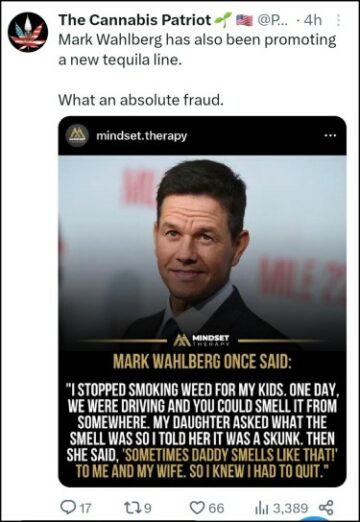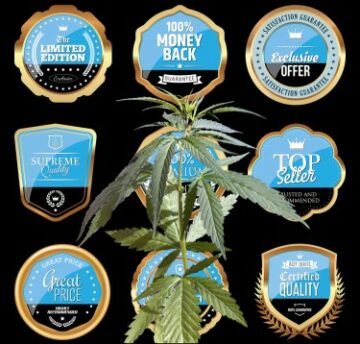
Just in is data analysis from the 2023 Monitoring the Future survey, led by researchers at the University of Michigan, Ann Arbor, and supported by the National Institute on Drug Abuse (NIDA). It reveals that about 11% of 12th-grade students nationwide reported using delta-8-tetrahydrocannabinol (commonly known as delta-8-THC or delta-8) within the past year.
According to Dr. Nora Volkow, director of NIDA, this percentage signifies a significant portion of high school seniors, with at least one or two students in an average-sized class potentially using delta-8. Dr. Volkow also highlights the concerning accessibility of these drugs to teenagers, emphasizing the need for further understanding and research into their effects.
Vaping nicotine is by far the biggest teen heath concern according to a new University of Michigan study spanning teens across America.
What is Delta-8?
Delta-8 THC, a chemical compound present in the cannabis sativa plant, is part of a group of over 100 such compounds. It serves as a chemical relative to delta-9 THC, the primary psychoactive component in cannabis. While delta-9 is renowned for inducing the cannabis high, delta-8 affects the brain similarly but with reduced potency and fewer legal constraints.
In contrast to cannabis, delta-8 lacks age restrictions in many states where it’s lawful. A recent study published in the journal JAMA underscores concerns regarding adolescent usage, suggesting it poses a potential public health risk.
Dr. Adam Leventhal, lead author of the study and executive director of the USC Institute for Addiction Science, notes a lack of comprehensive regulation contributing to the accessibility of delta-8 to teens.
Delta-8 is available in various enticing forms for adolescents, including gummies, chocolates, cookies, vaping cartridges, sodas, and even breakfast cereals. Its widespread availability extends beyond age-restricted dispensaries to convenience stores, gas stations, and online platforms.
The Research
In the latest study, researchers utilized data from the Monitoring the Future in-school survey conducted nationwide between February and June 2023. This survey, which continuously and representatively assesses adolescent behavior and perspectives on various subjects, initially gauged delta-8 usage in 2023.
Among the 2,186 12th-grade students sampled, 11.4% acknowledged using delta-8 THC within the past year. In contrast, despite the illegality of cannabis for teens, 30.4% admitted to its use.
Of the 295 students who reported delta-8 usage in the previous year, 68.1% had consumed it at least three times, 35.4% had indulged at least ten times, and nearly 17% had used it a minimum of 40 times. Additionally, approximately 91% of delta-8 users disclosed concurrent cannabis use.
The study revealed higher rates of delta-8 usage among teenagers in the South and Midwest, particularly in states where marijuana remains illegal for adults.
The study found that white teens were more inclined to use both delta-8 and cannabis compared to individuals of other racial or ethnic backgrounds. Additionally, slightly more boys reported using both substances than girls.
Dr. Nora Volkow, the director of the National Institute on Drug Abuse, who was not involved in the study, highlighted the significance of the 11% statistic, noting its representation of at least one or two students in an average-sized high school class. She emphasized the need for a deeper understanding of these substances due to their widespread accessibility among teens.
Dr. Volkow stressed the importance of educating young people about potential risks associated with cannabis use, particularly considering its negative impacts on the adolescent brain. She advocated for adequate treatment options for cannabis use disorder and mental health care for those in need.
Dr. Adam Leventhal echoed these concerns, labeling the 11% figure as “very high” and expressing surprise at its magnitude. He emphasized the need for attention to this issue and the importance of effectively addressing it.
Limitations of the Study
The study has certain limitations. First, it does not encompass teenagers from every state and solely surveys those currently enrolled in school. Additionally, given that most participants were around 17 years old, the study might need to capture the extent of delta-8 usage among younger adolescents fully.
The authors acknowledge that their research likely underestimates the prevalence of delta-8 usage among teenagers. Furthermore, an editorial published alongside the study notes a growing concern regarding the increasing number of students using delta-8.
Navigating Health Hazards and Regulatory Gaps
Dr. Jennifer Whitehill, Dr. Kelly Dunn, and Dr. Renee Johnson, researchers from the University of Massachusetts Amherst and Johns Hopkins University, underscored the potential public health risk posed by the unregulated proliferation of Δ8-THC. They emphasized that the usage trends outlined by Harlow et al. should be regarded as a significant warning, suggesting that future cannabinoids entering the market might pose more significant dangers.
Concerns surrounding delta-8 usage have led to its prohibition in at least 17 states and severe restrictions in seven more as of November, according to the National Cannabis Industry Association.
The effects delta-8 on teenagers remain poorly understood, lacking substantial medical studies to elucidate its impact on a developing body, particularly among youths. Studies on cannabis have demonstrated adverse effects on adolescent memory, attention, learning abilities, and potential risks of addiction and neurodevelopmental changes. This is due to the teenage brain’s ongoing maturation.
Dr. Adam Leventhal highlighted concerns about the potential for addiction and neurodevelopmental impacts due to exposure to intoxicating substances during adolescence. The lack of FDA regulation on delta-8 further obscures the content of individual products.
Growing indications suggest an increase in delta-8 usage, accompanied by associated issues. Calls to America’s Poison Centers regarding delta-8 products surged 82% from 2021 to 2022, with 3,358 exposures managed in 2022. These calls mainly involved accidental ingestion by children and adverse reactions reported by adults.
Conclusion
According to findings from the 2023 Monitoring the Future poll, 11% of American students in their 12th grade reported taking delta-8 THC in the previous year. This noteworthy percentage highlights worries regarding accessibility and possible hazards to the public’s health, especially for teenagers. The report emphasizes the need for more research and regulation by highlighting differences in consumption rates among demographic groups and geographical areas.
Experts have also expressed alarm about the lack of knowledge about delta-8’s effects on young people and its uncontrolled availability, which calls for immediate attention. Given the rising incidence of delta-8 usage, efforts to address these issues such as education, regulation, and treatment access are essential to preserving adolescents’ health and well-being.
TEENS AND LEGALIZATION, READ ON…
TEENS SMOKE LESS POT WITH LEGALIZATION, REALLY SURPRISED?
- SEO Powered Content & PR Distribution. Get Amplified Today.
- PlatoData.Network Vertical Generative Ai. Empower Yourself. Access Here.
- PlatoAiStream. Web3 Intelligence. Knowledge Amplified. Access Here.
- PlatoESG. Carbon, CleanTech, Energy, Environment, Solar, Waste Management. Access Here.
- PlatoHealth. Biotech and Clinical Trials Intelligence. Access Here.
- Source: http://cannabis.net/blog/news/over-10-of-high-school-seniors-say-they-have-tried-delta8-thc-but-is-it-keeping-them-away-from.324016
- :has
- :is
- :not
- :where
- 100
- 11
- 12th
- 17
- 2%
- 2021
- 2022
- 2023
- 30
- 35%
- 40
- a
- abilities
- About
- abuse
- access
- accessibility
- accidental
- accompanied
- According
- acknowledge
- acknowledged
- across
- Adam
- addiction
- Additionally
- address
- addressing
- adequate
- admitted
- adults
- adverse
- affects
- age
- AL
- alarm
- alongside
- also
- america
- American
- among
- an
- analysis
- and
- ann
- approximately
- ARE
- areas
- around
- AS
- assesses
- associated
- Association
- At
- attention
- author
- authors
- availability
- available
- away
- backgrounds
- BE
- behavior
- between
- Beyond
- Biggest
- body
- both
- Brain
- Breakfast
- but
- by
- Calls
- cannabis
- Cannabis Industry
- capture
- care
- Centers
- certain
- Changes
- chemical
- Children
- class
- commonly
- compared
- component
- Compound
- comprehensive
- Concern
- concerning
- Concerns
- concurrent
- conducted
- considering
- constraints
- consumed
- consumption
- content
- continuously
- contrast
- contributing
- convenience
- cookies
- Currently
- dangers
- data
- data analysis
- deeper
- demographic
- demonstrated
- Despite
- developing
- differences
- Director
- disorder
- dispensaries
- does
- dr
- drug
- due
- during
- E&T
- echoed
- Editorial
- educating
- Education
- effectively
- effects
- efforts
- emphasized
- emphasizes
- emphasizing
- encompass
- enrolled
- entering
- enticing
- especially
- essential
- Even
- Every
- executive
- Executive Director
- Exposure
- expressed
- expressing
- extends
- extent
- far
- fda
- February
- fewer
- Figure
- findings
- First
- For
- forms
- found
- from
- from 2021
- fully
- further
- Furthermore
- future
- GAS
- geographical
- girls
- given
- grade
- Group
- Group’s
- Growing
- had
- Have
- he
- Health
- Health Care
- High
- higher
- Highlighted
- highlighting
- highlights
- hopkins
- HTTPS
- Illegal
- immediate
- Impact
- Impacts
- importance
- in
- incidence
- Inclined
- Including
- Increase
- increasing
- indications
- individual
- individuals
- indulged
- industry
- initially
- Institute
- into
- involved
- issue
- issues
- IT
- ITS
- Jennifer
- johns
- Johns Hopkins
- Johns Hopkins University
- Johnson
- journal
- jpg
- june
- keeping
- knowledge
- known
- labeling
- Lack
- lacking
- lacks
- latest
- lead
- learning
- least
- Led
- Legal
- legalization
- less
- likely
- limitations
- magnitude
- mainly
- managed
- many
- marijuana
- Market
- massachusetts
- medical
- Memory
- mental
- Mental health
- Michigan
- Michigan study
- midwest
- might
- minimum
- monitoring
- more
- most
- National
- Nationwide
- nearly
- Need
- negative
- New
- nicotine
- Notes
- noteworthy
- noting
- November
- number
- of
- Old
- on
- ONE
- ongoing
- online
- online platforms
- Options
- or
- Other
- outlined
- over
- part
- participants
- particularly
- past
- People
- percentage
- perspectives
- plant
- Platforms
- plato
- Plato Data Intelligence
- PlatoData
- poison
- poll
- portion
- pose
- posed
- poses
- possible
- pot
- potency
- potential
- potentially
- present
- preserving
- previous
- primary
- Products
- proliferation
- public
- public health
- published
- Rates
- reactions
- Read
- really
- recent
- Reduced
- regarded
- regarding
- Regulation
- regulatory
- relative
- remain
- remains
- Renowned
- report
- Reported
- representation
- research
- researchers
- restrictions
- Revealed
- Reveals
- rising
- Risk
- risks
- s
- say
- School
- Science
- seniors
- serves
- seven
- severe
- she
- should
- significance
- significant
- signifies
- Similarly
- slightly
- Smoke
- solely
- some
- South
- spanning
- State
- States
- Stations
- stores
- Students
- studies
- Study
- substantial
- such
- suggest
- Supported
- Surged
- surprise
- surprised
- Surrounding
- Survey
- taking
- teen
- teenagers
- Teens
- ten
- than
- that
- THC
- The
- The Future
- their
- Them
- These
- they
- this
- those
- three
- times
- to
- treatment
- Trends
- tried
- trying
- two
- underscored
- underscores
- understanding
- understood
- university
- University of Michigan
- Usage
- use
- used
- users
- using
- utilized
- various
- very
- warning
- was
- weed
- were
- which
- while
- white
- WHO
- widespread
- with
- within
- year
- years
- young
- Younger
- YOUTHS
- zephyrnet












